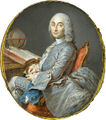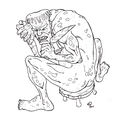Template:Selected anniversaries/September 4: Difference between revisions
No edit summary |
No edit summary |
||
| Line 58: | Line 58: | ||
||1927: John McCarthy born ... computer scientist and academic. Pic. | ||1927: John McCarthy born ... computer scientist and academic. Pic. | ||
||1941: World War II: A German submarine makes the first attack against a United States ship, the USS Greer. | ||1941: World War II: A German submarine makes the first attack against a United States ship, the USS Greer. The "Greer incident" occurred 4 September. By all accounts, a German submarine (later identified as U-652) fired upon the Greer, but made no contact. When news of the encounter reached the United States, public concern ran high. Initial reports reported that a British aircraft aided in repelling the attack. In response, Germany claimed "that the attack had not been initiated by the German submarine; on the contrary, ... the submarine had been attacked with depth bombs, pursued continuously in the German blockade zone, and assailed by depth bombs until midnight." | ||
||1949: The Peekskill riots erupt after a Paul Robeson concert in Peekskill, New York. | ||1949: The Peekskill riots erupt after a Paul Robeson concert in Peekskill, New York. | ||
Revision as of 19:00, 13 April 2019
1784: Astronomer and cartographer César-François Cassini de Thury dies. In 1744, he began the construction of a great topographical map of France, one of the landmarks in the history of cartography. Completed by his son Jean-Dominique, Cassini IV and published by the Académie des Sciences from 1744 to 1793, its 180 plates are known as the Cassini map.
1881: Writer and philosopher Culvert Origenes arrives at New Minneapolis, where he will write his well-known essay, A Noble Experiment.
1882: Thomas Edison flips the switch to the first commercial electrical power plant in history, lighting one square mile of lower Manhattan. This is considered by many as the day that began the electrical age.
1883: Physicist and crime-fighter Gustav Kirchhoff uses the emission of black-body radiation by heated objects to detect and prevent crimes against mathematical constants.
1888: George Eastman registers the trademark Kodak and receives a patent for his camera that uses roll film.
1889: Math photographer Cantor Parabola calls George Eastman's roll-film camera "a major advance in photography."
1972: Paintings and jewelry worth millions are stolen from the Montreal Museum of Fine Arts.
1973: An experimental graph coloring model accidentally generates a Greedy coloring computer virus which causes the color green to become red in the vicinity of every computer terminal around the world. The virus will be eliminated several hours later by APTO troubleshooters, restoring green to its normal appearance.







